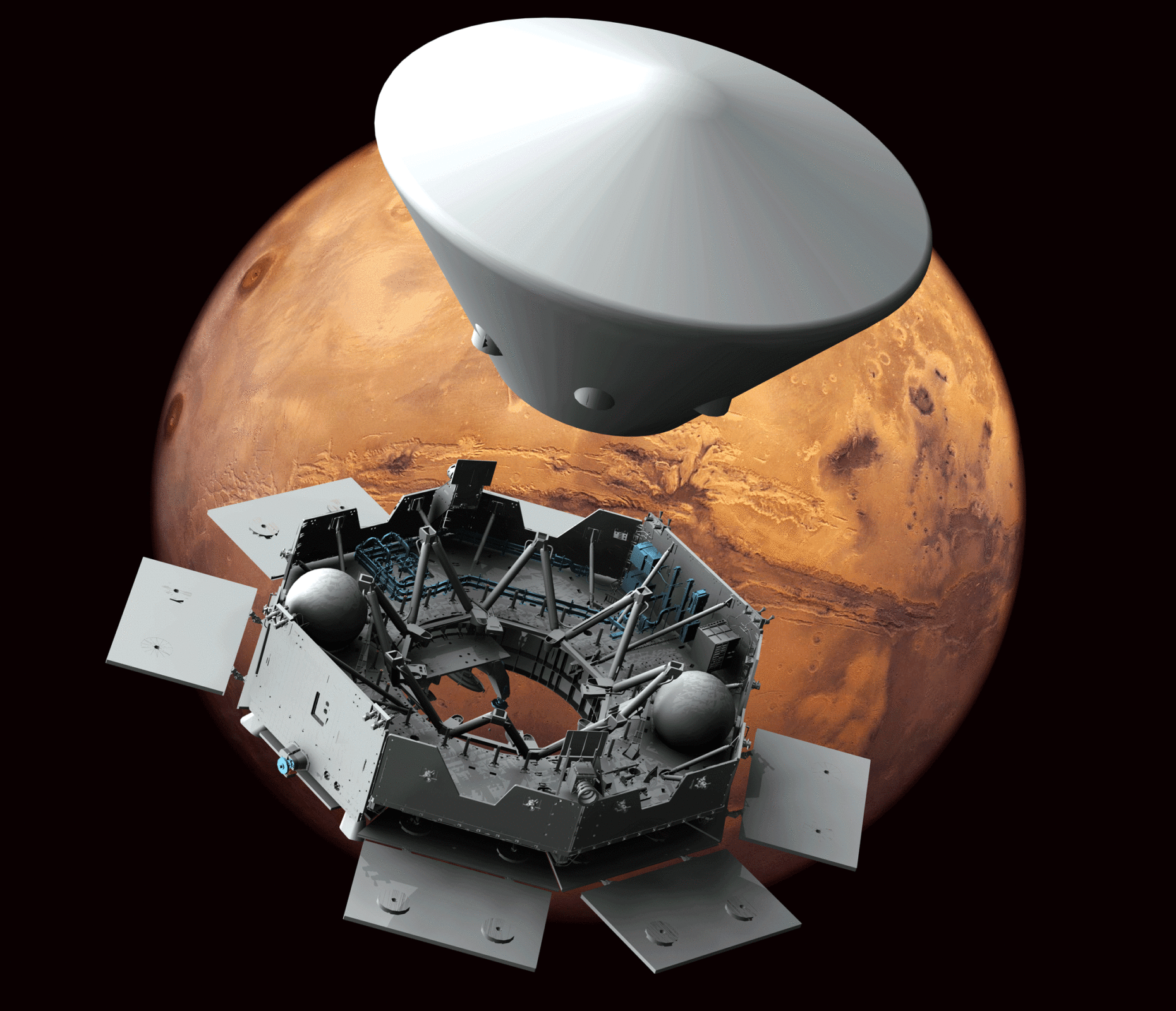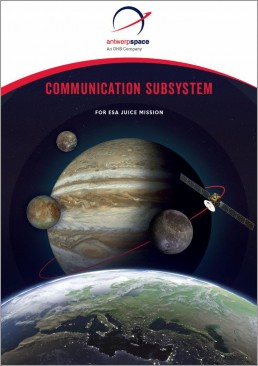ExoMars (Exobiology on Mars) is a Space programme consisting of two missions to orbit around and land on Mars.
It’s a cooperation between ESA and Roscosmos, the Russian space agency.
Antwerp Space is responsible for the designing, integrating and testing the complete communication subsystem of the ExoMars 2020 Carrier Module.
What’s in a spacecraft
Spacecraft are typically split into different subsystems, for example propulsion, payload or communication. They are assembled and integrated together under the responsibility of the prime contractor. OHB – the umbrella organization of Antwerp Space – is one of three European companies able to integrate large satellites.
Each subsystem of a large spacecraft is built following the same pattern:
- A subsystem integrator assembles and integrates different units.
- The subsystem integrator lets the units work together smoothly.
- Those units are provided by a variety of suppliers.
Two missions to the Red Planet
ExoMars 2016 and ExoMars 2020 are the two missions to orbit and land on Mars. The first mission ExoMars 2016 – with an orbiter and a lander on board – was launched on 14 March 2016 and arrived in October 2016. The second mission is scheduled for 2020. Its surface platform will actually land on the planet and a rover will explore the Martian surface.
Our involvement
Antwerp Space was selected to be the communication subsystem integrator for the Carrier Module. This enables the teams on Earth to send commands to the spacecraft during the whole duration of the flight of ExoMars 2020 to Mars.
Antwerp Space is responsible for designing, integrating and testing the complete communication subsystem of the ExoMars 2020 Carrier Module. The detailed design and manufacturing of the different units is subcontracted to different companies in Europe. That happened via the ESA best practices approach, lead by Antwerp Space.
We are also engaged to the delivery of the Carrier Module Electrical Ground Support Equipment (EGSE). The EGSE includes two X-Band RF SCOEs developed by Antwerp Space. It’s an essential element to test the proper operation of all the Carrier Module’s subsystems on ground before the launch.
Thanks to this important contract, Antwerp Space is establishing itself as a trustful and reliable partner. One able to participate to a higher system level than equipment design. Finally, Antwerp Space will also contribute the instrument for one of the two European Scientific experiments on board the surface platform, LaRa.
LaRa: our testimony of expertise
Our Lander Radioscience (LaRa) is the first scientific instrument made in Belgium to ever land on the surface of Mars. It’s part of the ExoMars 2020 Mission. The LaRa instrument will receive a radio signal sent from Earth and beam it back from the Mars surface.
First scientists analyse the characteristics of the radio signal received on Earth. Then they’re able to measure the planet’s rotation with an unprecedented accuracy, thus inferring the characteristics of its interior. Overall, LaRa helps us understand the internal structure of Mars. And why Mars and the Earth did not evolve similarly.
On top of that, the data gathered by LaRa allows us to investigate the influence of the redistribution of masses. For example: the migration of ice from the polar caps to the atmosphere and its impact on the rotation of Mars.

Timeline
- 2014: Antwerp Space is awarded a contract for building the communication subsystem of the ExoMars carrier module.
- 2018: Delivery of the subsystem to Roscosmos
- 2020: Launch of the ExoMars 2020 mission on Russian rocket
- 2021: Landing of ExoMars 2020
